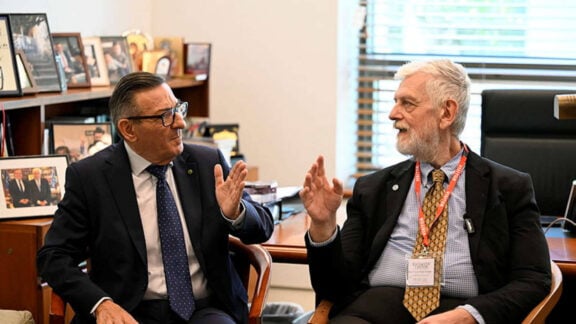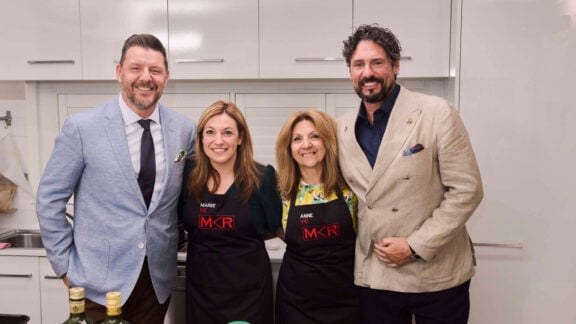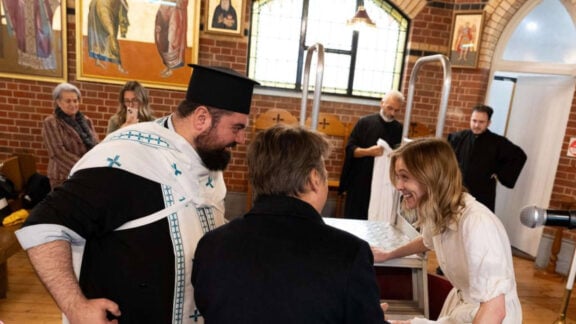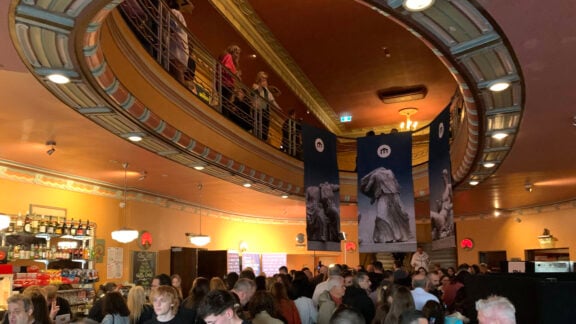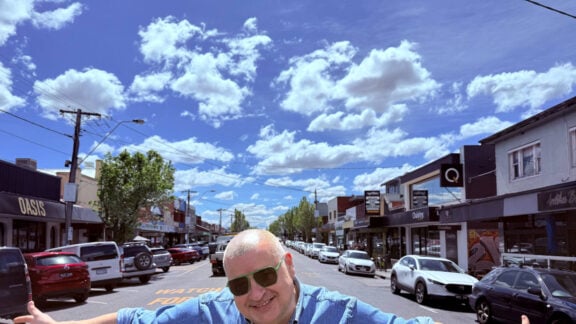Last week saw cancer survivor Anelia Myburgh, 31, who had lost most over her upper jaw and teeth to cancer offered a second chance in life thanks to maxillofacial surgeon George Dimitroulis, who customised a 3D printed jaw for her. The story was all over the news, and garnered international attention as the ground-breaking procedure is not only helping change patients’ faces but also the face of modern medicine.
But it was back in 2015, when we first noticed Dr Dimitroulis’ name take over the media, when he implanted the first 3D-printed titanium jaw joint to be produced in Australia, into the then 32-year-old Richard Stratton’s face.
Mr Stratton was missing part of his jawbone, including the left condyle, the joint that connects the jaw to the skull. Growing up, the young psychologist suffered increasing pain while chewing or moving his jaw and he had not been able to fully open his mouth while the issue had caused the right side of his face to expand asymmetrically.

Dr Dimitroulis, who is also an honorary fellow (and alumnus) of the University of Melbourne had already started working towards utilising 3D printing technology for temporomandibular joint (TMJ) restorative surgery back in 2012. In collaboration with Melbourne University biomedical engineer Dr David Ackland, and a team of exceptional undergraduate engineering students – they developed a computer model and worked to create an entirely new type of prosthesis that would tackle the issues associated with existing ‘off the shelf’ implants.
The surgery was a success and even though Dr Dimitroulis had seen the potential for something new years ago, it was Richard Stratton’s case that convinced him that 3D printed implants could help change many patients’ quality of life.
“Looking at so many cases of patients who were suffering from trauma, cancer or osteoarthritis and having to either undergo extremely painful surgeries for custom prosthesis or settle for ‘off-the-shelf’ standard size implants, I thought to myself, I could do better than this.”
“Seeing people suffer for months and be drained financially for prostheses that were not actually improving their quality of life, I knew I needed to do something,” Dr Dimitroulis tells Neos Kosmos.
“Eventually I set up my own private company, ONX Solutions, using 3D printing technology exactly for that purpose. I founded that company, and now we employ half a dozen full time engineers to work on products and innovative designs.”

Although it was Ms Myburgh’s story whose treatment was organised by Epworth Private Hospital and aired by 9News that garnered the most attention, Dr Dimitroulis says that his team has performed over 120 such procedures since Mr Stratton, most of which pro-bono.
“At St Vincent’s we see cancer patients all the time and to watch them suffer is heartbreaking,” says Dr Dimitroulis.
“Apart from missing a significant portion of her face – most of her jaw had been removed, including her upper lip – Anelia was troubled by not being able to chew and enjoy something as simple as food. She couldn’t smile. She was a recluse.”
“Anelia was looking for a better quality of life and she had tried everywhere but no one had been able to provide what we could, what we did. We offered this sort of custom design platform where with our expertise we can design anything for patients. It is a simple reconstructive solution that includes teeth. These have not been made available anywhere else. Doctors had told her that they could probably pump-out a lip with surgery but they could not restore her jaw and her mouth.”
Dr Dimitroulis who has headed up the maxillofacial unit at St Vincent’s hospital for 12 years, is excited that Anelia’s story has gotten this much media attention, as it allows other people that might be suffering similar issues see the sort of work they do.
“Many of our major cases are patients who haven’t got insurance dealing with facial trauma and cancer. Patients can lose their jaw. If they suit that profile and need that work, we are here to help,” he enthuses, explaining that even though Anelia was financially comfortable and her procedure was fully covered by her insurance, they treat many people who cannot afford it.
Indeed, Ms Myburgh won’t let a chance go by without expressing her eternal gratitude and joy for being able to go on with her life and enjoy simple pleasures like talking, laughing and especially eating burgers!
“In a few years from now, I can look back and say, I’ve left a legacy; I’ve actually changed people’s lives”
Suzie Robinson, another patient of Dr Dimitroulis’ had spent over $100,000 dollars in procedures and standard bone grafts without finding a viable solution. She finally got a 3D printed custom implant and her peace of mind for $8,000.
“Correct, that is what 3D printing is all about; it has brought down the cost of medical devices,” he stresses. “The price becomes equivalent of a non-custom implant but our 3D printed titanium implant is fully customisable to each patient at the same price. Getting off-the-shelf devices by dental companies, means that patients without bone and difficult deformities need complex reconstructive surgery that may not work.”
“We follow the bone structure of the patient, the face, and replace what’s missing; what should have been there. We give patients the opportunity to avoid the bone grafts as we develop an implant that will cover that area and will also be able to hold teeth. Bone grafts can’t do that,” he repeats highlighting the importance of providing the patient with a structure that will allow them to chew and smile.
“It is not just the innovation in the 3D printing customisation, it’s also the ability to pre-plan in order to not just fix the exterior or mask the issue. We honestly venture to improve their quality of life.”
As a second generation Greek whose parents emigrated to Australia from Kalamata, Dr Dimitroulis knows what it is like to struggle.
“My father came out in the mid-fifties and my mother arrived as one of those brides in 1960. They had four kids; all born in the 60s and raised in South Yarra,” he says.
“My father used to work on the railways. He worked hard to put us through school. We all went to local public school. I was the first to get into University of Melbourne in the 80s.”
It was that hard life and his parents’ nudging that made him pick dentistry when he was actually more interested in science, specifically physics.
“That’s what I wanted to do – but you know – Greek parents being Greek parents they thought I should do something more practical. As I was good with my hands, I decided to study dentistry.”
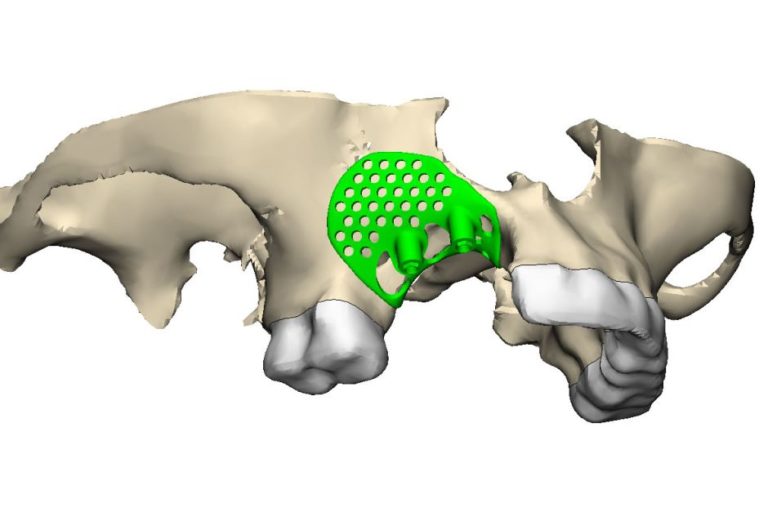
The Greek boy from humble beginnings, started to get even more interested in the oral and jaw surgery components, specialties that went from being part of dentistry to being part of medicine. With another seven years of post-graduate studies in maxillofacial surgery in the UK and America he became one of the world’s leading TNJ surgeons and a trailblazer in jaw surgery.
“What I want, is for ONX Solutions – the company I’ve founded – to grow. I want to take on as many engineers as I can and make it an Australian company with global reach,” he says.
His aspiration is to help promote Australia internationally, praising the skill-set and level of expertise surgeons and engineers in the country. His goal, however, is to ultimately keep changing people’s lives.
“If anyone has a jaw or facial deformity, if they are missing part of their bone or their jaw, I’d like to let them know that we have the provision for public. They can contact my rooms – we’re happy to see them and try to find a way to help,” he says.
“To know that you’ve made a difference… It really makes me wanna come to work every day.
“What matters to me at the end of the day is that in few years from now I can look back and say ‘I’ve left a legacy; I’ve actually changed people’s lives.”
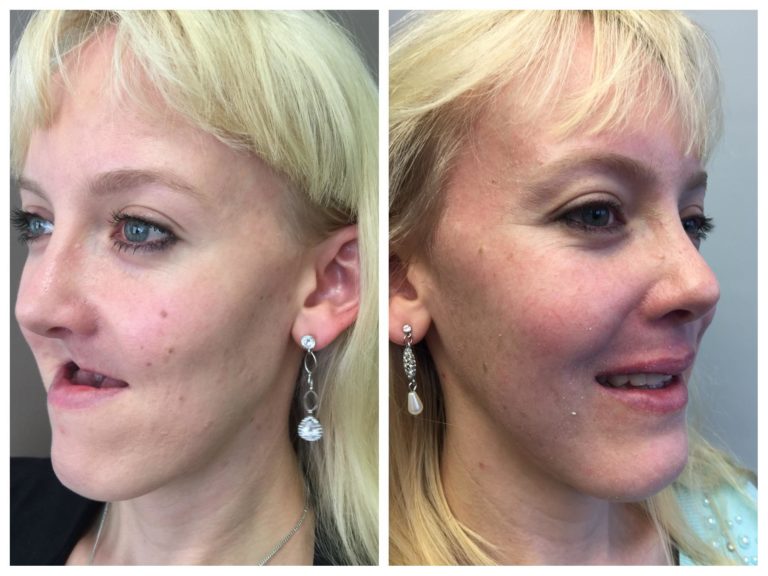
*For more information contact Dr George Dimitroulis on (03) 9654 3799. Email: gdimitroulis@netspace.net.au


